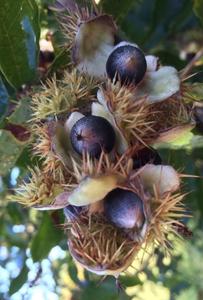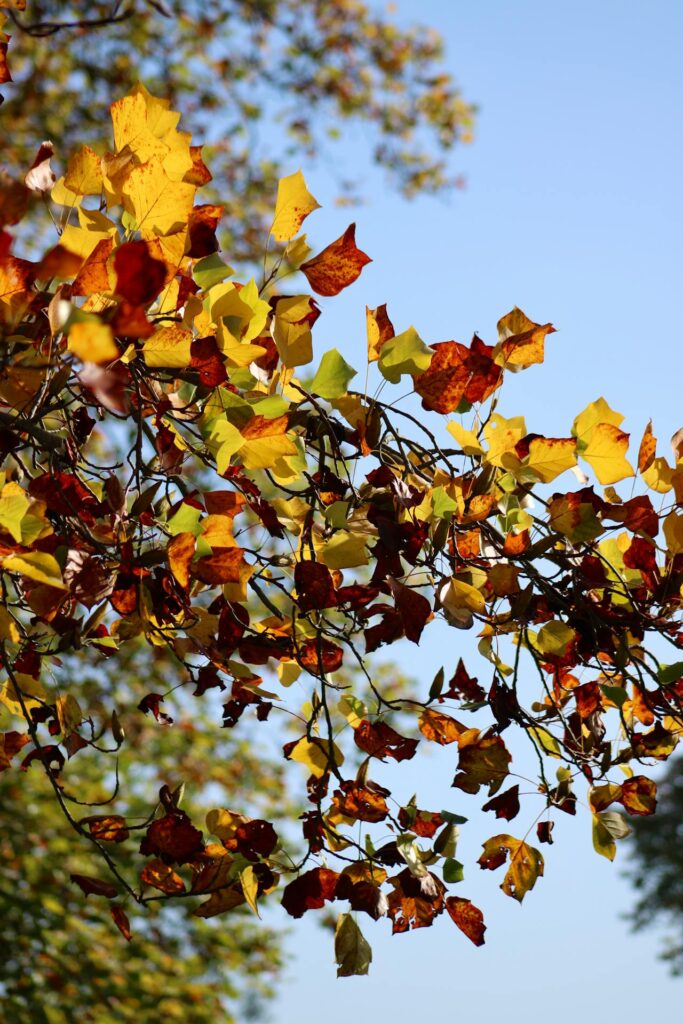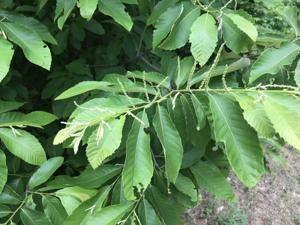How to Grow Allegheny Chinquapin: A Simple Step-by-Step Guide

Introduction: Discovering the Hidden Gem of American Forests
The Allegheny Chinquapin (Castanea pumila) represents the continent’s most fascinating native chestnut species. It is smaller than the American Chestnut.
The Allegheny Chinquapin grows as a large shrub or small tree. It reaches heights of 15-30 feet under optimal conditions. The Chinquapin maintains a presence in our woodlands despite the challenges of diseases.
The tree produces single nuts within its burrs. These nuts have served as a food source for wildlife and human populations. The tree grows from southern Pennsylvania to Florida and westward to Texas.
Native American tribes relied on Allegheny Chinquapin for food and medicine. Early European settlers incorporated it into their food systems.
Physical Description and Characteristics of the Allegheny Chinquapin
The Allegheny Chinquapin exhibits a growth pattern that makes it identifiable. This species takes the form of a large, multi-stemmed shrub. Mature plants achieve heights between 15-30 feet. Some specimens reach up to 40 feet.
The leaf structure of Castanea pumila provides one of its distinctive features. Each leaf measures between 3-6 inches in length. They have a lance-shaped form with toothed edges that create a serrated appearance. The upper surface of these leaves shows a green coloration. The underside has a lighter, fuzzy texture.
The root system of the Allegheny Chinquapin demonstrates adaptability. It develops a spreading root structure that gives it drought tolerance.
From May to June, the Allegheny Chinquapin produces two types of flowers:
- Long, slender male catkins measuring 4-8 inches in length
- Small female flowers that appear near the base of the male catkins
These flowers release a sweet fragrance that attracts pollinators. Male catkins create a striking display when the plant is in full bloom.
The tree’s nut production sets it apart from other members of the Castanea genus. Each spiny burr of the Chinquapin contains a single, sweet nut. The nuts measure approximately 1/2 to 3/4 inch in diameter.
The nuts have several distinctive qualities:
- A rich, sweet flavor described as superior to other chestnut species
- A smaller size makes them perfect for wildlife consumption
- A thin shell that allows easier access to the nutritious kernel
- High protein content compared to other tree nuts
- Superior storage capabilities when dried and maintained
The species also demonstrates remarkable seasonal interest throughout the year:
- Spring brings the emergence of bright green leaves and showy catkins
- Summer features deep green foliage and developing nut burrs
- Fall showcases golden foliage and ripening nuts
- Winter reveals the plant’s graceful branching structure
These physical characteristics are appealing across all seasons.

Natural Habitat and Distribution of the Allegheny Chinquapin
The Allegheny Chinquapin reaches its greatest density in the southeastern United States. The combination of well-drained soils and rainfall creates ideal conditions. The tree becomes less common where colder temperatures limit its spread.
The species prefers well-drained, acidic soils with pH levels from 4.5 to 6.5. It thrives best in sandy loam or rocky soils with good organic matter content.
The climate requirements of Castanea pumila reflect its southeastern heritage. The species prosper in areas receiving annual rainfall between 40 to 60 inches. It demonstrates impressive drought tolerance once established. Temperature preferences align with USDA hardiness zones 5b through 9a. The tree can withstand winter temperatures as low as -15°F in protected locations.
In understanding the habitat preferences of Castanea pumila: We gain insights into its current distribution and potential for cultivation and conservation. These habitat requirements provide guidelines for those interested in establishing or maintaining populations. The species’ adaptability and tolerance make it valuable for projects in degraded landscapes.
The tree’s role in forest succession deserves attention. The Allegheny Chinquapin often serves as a transitional species in forest regeneration. Its presence can help stabilize soil and provide shade for emerging seedlings.
Growing Allegheny Chinquapin: A Cultivation Guide
These trees thrive best in locations that receive full sun to partial shade. It needs at least six hours of direct sunlight daily. Their flowering and nut production will be most abundant in sunny spots. When planting, consider that mature specimens need 15-20 feet in width for their crown.
Soil preparation begins by testing your soil pH. Aim for an acidic pH between 4.5 and 6.5. Incorporate pine needles or oak leaves to lower pH levels. The soil should be well-draining but keep enough moisture to support healthy growth. Working compost into the top 12-18 inches of soil will improve drainage and fertility.
The planting process itself requires careful attention to detail. The best time to plant Allegheny Chinquapin is during the dormant season. Plant in late fall after leaf drop or in early spring before bud break. Dig a hole twice as wide as the root ball but no deeper than the container depth.
Watering for Allegheny Chinquapin follows a pattern throughout the growing season. Maintain consistent soil moisture without waterlogging. A good rule of thumb is to provide one inch of water per week. These trees show remarkable drought tolerance once established. They produce better nut crops with regular watering during dry spells.

A balanced, slow-release organic fertilizer applied in early spring supports healthy growth. Avoid over-fertilizing to promote vegetative growth at the expense of nut production. A general fertilization schedule might include:
First year: Use a light application of fertilizer in spring for established trees. Yearly apply compost around the drip line for mature specimens. Add extra fertilizer only if soil tests or show deficiencies.
Pruning and maintenance help shape the tree’s growth and continued health. Young plants enjoy light pruning to establish a framework of branches.
Remove dead, damaged, or diseased branches from mature trees. Cut branches in crowded areas for improved air circulation. Cut crossing or rubbing branches to avoid bark rot.
Maintain a mulch ring around plants to suppress weeds and conserve soil moisture. Use organic mulch such as wood chips or shredded leaves. Keep the mulch several inches away from the trunk to prevent collar rot.

Disease Resistance and Challenges of the Allegheny Chinquapin
This species faces various challenges. Chestnut blight caused by the pathogen Cryphonectria parasitica, intertwines with the Allegheny Chinquapin’s history. This disease eliminated mature American Chestnut trees from eastern forests. Allegheny Chinquapin has shown a different response. Chinquapin demonstrates the ability to survive and reproduce despite infection. This resistance manifests through several mechanisms:
The multi-stemmed growth habit allows new shoots to replace those killed by blight. The plant’s vigorous root system supports the regeneration of stems. The smaller Chinquapin appears to show less severe symptoms than larger, older ones.
Allegheny Chinquapin faces challenges from other pests and diseases. Common issues include:
Phytophthora root rot poses threats in poorly drained soils. This water-mold pathogen attacks the root system. Chinquapin’s preference for well-drained sites helps cut this risk in many locations.
The Asian ambrosia beetle damages young stems and branches in stressed plants. These tiny insects create galleries within the wood. Healthy plants withstand and recover from such attacks through their natural defense mechanisms.
Weevils targeting nuts impact seed production. These insects lay eggs in developing nuts, and their larvae consume the kernels. This presents challenges for reproduction and nut harvest, it rarely threatens plant survival.
Management strategies for these challenges have evolved through research. Current approaches emphasize integrated pest management (IPM):
Physical controls can prove effective against certain pests. Collecting and destroying infected nuts helps break weevil life cycles. Removal of blighted stems can slow disease spread within multi-stemmed specimens.
Researchers have identified blight resistance leading to selective breeding efforts. These programs combine the resilience of Chinquapin with growth characteristics and nut production.
The future for Allegheny Chinquapin appears optimistic. Several factors contribute to this assessment:
The species maintains viable populations throughout much of its native range. Genetic diversity within these populations provides material for natural selection and breeding programs.
Scientists have noted that climate change influences disease and pest pressures on populations. Monitoring these effects informs adaptive management strategies.

Propagation Methods for Allegheny Chinquapin
The propagation of Allegheny Chinquapin (Castanea pumila) requires understanding several techniques. Mastering these propagation methods proves essential for success.
Growing Allegheny Chinquapin from seed represents the natural and successful method of propagation. The process begins with proper seed collection and storage. Fresh nuts should be collected as soon as they fall from the tree. It’s important to understand that viable nuts feel heavy for their size and sink in water. The collected nuts need proper storage to maintain viability.
The seed stratification process plays a role in successful germination. The seeds have evolved to need a period of cold dormancy before sprouting. Place the cleaned nuts in damp (but not wet) sand or peat moss. Store them in a refrigerator at approximately 34-40°F (1-4°C) for 2-3 months. This stratification process breaks seed dormancy and promotes germination when planting time arrives.
Planting the stratified seeds requires careful attention to timing and technique. As soil temperatures begin to warm it provides optimal conditions for germination. The seeds should be planted one inch deep in well-draining soil or in prepared garden soil. Protection from rodents is essential because they detect and consume the nuts. Many growers use hardware cloth or similar barriers to protect the seeds.

Grafting techniques offer another approach to propagation. Several grafting methods have proven successful with Allegheny Chinquapin:
Whip and tongue grafting work well with similar-sized rootstock and scion wood. The technique requires alignment of the cambium layers and proper timing.
Bark grafting proves effective when working with larger rootstock. It allows many scions to be inserted around the circumference of the stock. This method shows success rates during the growing season when the bark slips.
Transplanting guidelines for Allegheny Chinquapin emphasize the importance of timing and proper technique. Young plants transplant more successfully than mature specimens. Early spring offers the best window of opportunity. If you are moving plants preserve as much of the root system as possible. Maintain soil contact around the roots throughout the process. Create a planting hole that allows for root spread. Maintain the appropriate depth for transplant success.
Best practices for propagation include several key considerations that apply across all methods:
Maintaining appropriate moisture levels without overwatering prevents fungal problems. Good air circulation around seedlings or grafted specimens reduces disease pressure. Regular monitoring allows early detection and management of any potential issues.
Common propagation challenges relate to environmental conditions and timing. Poor germination rates result from improper storage conditions or inadequate stratification periods. Grafting failures occur due to poor cambium alignment. It also comes from inappropriate timing of the operation. Understanding these challenges allows growers to take preventive measures and achieve success.
The establishment period following propagation requires attention to ensure long-term success. Young Allegheny Chinquapin plants need protection against drought stress. Provide adequate but not excessive water. Maintain a weed-free zone around developing plants. Monitoring for pests or diseases during the first growing season improves establishment rates.
Collecting seeds or propagation material from parent plants preserves genetics. This provides resilience against challenges and supports population health.

Conclusion: Understanding and Preserving the Allegheny Chinquapin Legacy
This species represents far more than another tree in our eastern forests. Its story interweaves ecological significance, cultural heritage, and future potential. It highlights its importance for both natural ecosystems and human communities.
We’ve examined how Allegheny Chinquapin adapts to various environments. It maintains resilience in the face of challenges that have devastated the American Chestnut. The species’ ability to thrive in different soil conditions to its capacity to recover from disease. This adaptability becomes valuable as our forests face ongoing environmental changes.
The tree creates a chain of ecological interactions that support forest biodiversity. Allegheny Chinquapin holds promise for applications in ecology, agriculture, and landscape design. Its combination of wildlife value, human uses, and environmental adaptability makes it relevant. The species is valuable in developing ecosystems capable of withstanding climate change.